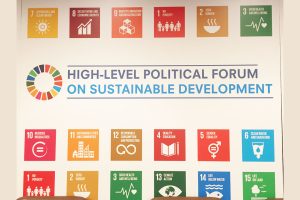Imagine an area the size of Belgium, blanketed by forests and trees which provide food, fuel, medicine, shelter, and incomes for local habitants while conserving soil and water for farms and absorbing carbon from the atmosphere.
Now, imagine that area stripped entirely of its trees. This is the amount of forest area lost to the world each year. The total cost of this deforestation is immeasurable, with impacts extending far beyond the forest itself.
Once forests and trees have disappeared, so too will the integrity of the soil and water systems they supported — often permanently. Approximately 75% of all freshwater for farms, industry and homes comes from forests and wetlands. Forests also sequester more carbon than any other terrestrial ecosystem, and when they are destroyed, this carbon is released back into the atmosphere, impacting adversely on the global climate.
Deforestation’s negative impacts for people and the environment are thus far-reaching and serious. Increased forest loss also means that, without major corrections in land use, the world will fail to meet crucial global targets, particularly the Sustainable Development Goals (SDGs). Deforestation threatens achievement of forestry targets under the Goals, as well as SDGs on eradicating hunger and poverty, preserving health and fighting climate change — which rely heavily on the goods and services that forests provide.
To put this degree of interdependence into perspective, we need to look at SDG 15 on ‘Life on Land.’ In July, the High-level Political Forum on Sustainable Development (HLPF) will review progress towards this Goal, which calls for, by 2020, promoting the implementation of sustainable management of all types of forests, halting deforestation, restoring degraded forests and substantially increasing afforestation and reforestation globally. These are highly ambitious targets. SDG 15 requires the world to ensure that through the sustainable management of forests, we also protect biodiversity; restore and promote the sustainable use of terrestrial ecosystems; and halt and reverse land degradation.
None of these measures can be achieved if forests are not at the heart of policies, development strategies, and actions that go far beyond the forest sector.
This is because many drivers of deforestation lie outside the forest sector and are rooted in wider social and economic issues, including challenges related to reducing poverty, and policies that favor land uses that produce higher and more rapid financial returns, including energy, mining, transportation, and agriculture.
Further, a growing world population projected to reach 9.6 billion by 2050 makes it critically important to find ways to feed people while maintaining and expanding forests to meet other human needs.
This can be done.
Research published by the Food and Agriculture Organization of the UN (FAO) has shown how, over the past quarter-century, more than 20 countries have improved food security while, at the same time, maintaining or increasing their forest cover. Food production can expand through agricultural intensification and other important policy measures. Ghana, Tunisia, and Viet Nam are just a few examples from very different countries that all show strong results when decision-makers coordinate policies across sectors, such as agriculture, forestry, land-use planning, and rights to land tenure.
Over the past quarter-century, more than 20 countries have improved food security while, at the same time, maintaining or increasing their forest cover.
Sharing expertise and increasing awareness is a critical part of this process. Governments at all levels must work closely with indigenous peoples, community representatives, private-sector associations, and international organizations. Corporate responsibility commitments by large companies operating in the agricultural sector are equally important. An inclusive and broad engagement can lead to a re-evaluation of the role of forests in agriculture production. Innovative technology must be shared and applied to a greater degree, international financial instruments and private-public partnerships considered, and governance issues, including tenure, reviewed.
There is no time to waste. Halting and reversing deforestation globally presents an enormous challenge and will require both political will and concerted action across all sectors at all levels. This effort may influence pivotal decisions expected this year when the HLPF takes stock of progress toward the SDGs in July. This will, in turn, influence follow-up actions by States, business, and civil-society partners at all levels. With collective action now, we can address the global challenge of deforestation, achieve our targets, and ensure that the world today, and in the future, continues to enjoy all of the goods and services that forests provide.
FAO is hosting a major international conference, ‘Working across Sectors to Halt Deforestation and Increase Forest Area – from Aspiration to Action,’ from 20-22 February 2018.


